THE T OF JESÚS RAFAEL SOTO IN CAYÓN
Jesús Rafael Soto (Ciudad Bolívar, Venezuela, 1923-Paris, France, 2005) carried out several investigations during the 1960s on possible solutions to face the fragmentation that his language needed. From those explorations emerged the T, a fine, metallic element of simple purity that allowed him to access, with satisfaction, to that disintegration he pursued and to reach a certain sensation of vibration and sublime volatility thanks to the linear disposition of these elements and their uniform arrangement that ended up giving the work a certain mediation between the spectator and the space and movement.
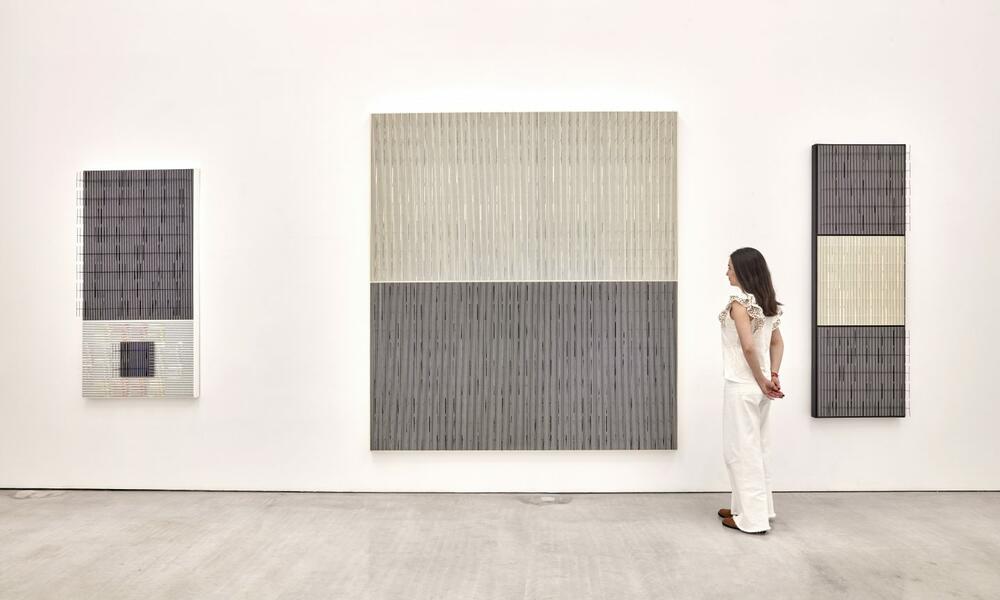
Cayón, in Madrid, presents an exhibition that specifically gathers several works by the Venezuelan artist that revolve around, incorporate or are built on this technical element. Thus, Soto, la T goes beyond the mere exhibition of works that can portray a holistic vision of his oeuvre and delves into an exhibition of an aesthetic, technical and academic nature on one of his periods and recognizable elements.
The fourteen pieces that make up the tour are distributed in two spaces and are intended to show the plastic result that the artist achieved with the incorporation of his T and their positive result in that search that allowed him to capture the titilation and the play of light. In addition, as a point of an essential and pivotal object of the exhibition, is exhibited, for the first time, what is considered the first T, made in 1961, which emerges in the form of a small stump in which the metallic solution is incorporated at a right angle, a nail that, at the beginning and by means of a wire, manages to distance itself from the background by means of a wire that, over time, will be replaced by applicable thin metal.
-
Soto. La T (0) Foto de David Bordes
-
Soto. La T (0) Foto de David Bordes
-
Soto. La T (1) Foto de David Bordes
-
Soto. La T (2)
-
Soto. La T (4) Foto de David Bordes (1)
-
Soto. La T (5) Foto de David Bordes
-
Soto. La T (6) Foto de David Bordes
-
Soto. La T (7) Foto de David Bordes
-
Soto. La T (8) Foto de David Bordes
-
Soto. La T (9) Foto de David Bordes
Soto, la T can be seen until November 1 at Galería Cayón, Blanca de Navarra 7 y 9, Madrid (Spain).
May interest you
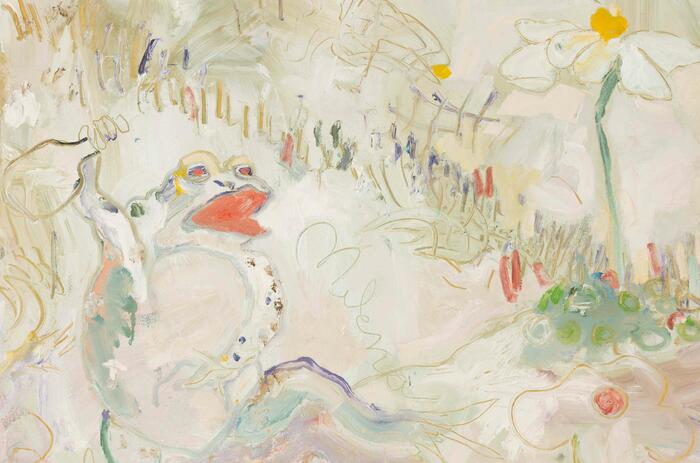
Travesía Cuatro hosts at its Madrid headquarters Surf and Turf, the fifth exhibition that the gallery dedicates to Milena Múzquiz (Tijuana, Mexico, 1972), that gathers, with about thirty works, the continuity of the production that began after the aesthetic and technical change produced by the end of Los Súper Elegantes, a musical group that he shared with the Argentine Martiniano López Crozet, and which represented a platform that brought together his purest expression through voice and body, as well as with the aesthetic possibilities of costumes and image.
THE DAILY LIFE AND POPULAR EXPRESSION OF MILENA MÚZQUIZ IN TRAVESÍA CUATRO
Travesía Cuatro hosts at its Madrid headquarters Surf and Turf, the fifth exhibition that the gallery dedicates to Milena Múzquiz (Tijuana, Mexico, 1972), that gathers, with about thirty works, the continuity of the production that began after the aesthetic and technical change produced by the end of Los Súper Elegantes, a musical group that he shared with the Argentine Martiniano López Crozet, and which represented a platform that brought together his purest expression through voice and body, as well as with the aesthetic possibilities of costumes and image.

Travesía Cuatro hosts at its Madrid headquarters Surf and Turf, the fifth exhibition that the gallery dedicates to Milena Múzquiz (Tijuana, Mexico, 1972), that gathers, with about thirty works, the continuity of the production that began after the aesthetic and technical change produced by the end of Los Súper Elegantes, a musical group that he shared with the Argentine Martiniano López Crozet, and which represented a platform that brought together his purest expression through voice and body, as well as with the aesthetic possibilities of costumes and image.
THE DAILY LIFE AND POPULAR EXPRESSION OF MILENA MÚZQUIZ IN TRAVESÍA CUATRO
Travesía Cuatro hosts at its Madrid headquarters Surf and Turf, the fifth exhibition that the gallery dedicates to Milena Múzquiz (Tijuana, Mexico, 1972), that gathers, with about thirty works, the continuity of the production that began after the aesthetic and technical change produced by the end of Los Súper Elegantes, a musical group that he shared with the Argentine Martiniano López Crozet, and which represented a platform that brought together his purest expression through voice and body, as well as with the aesthetic possibilities of costumes and image.
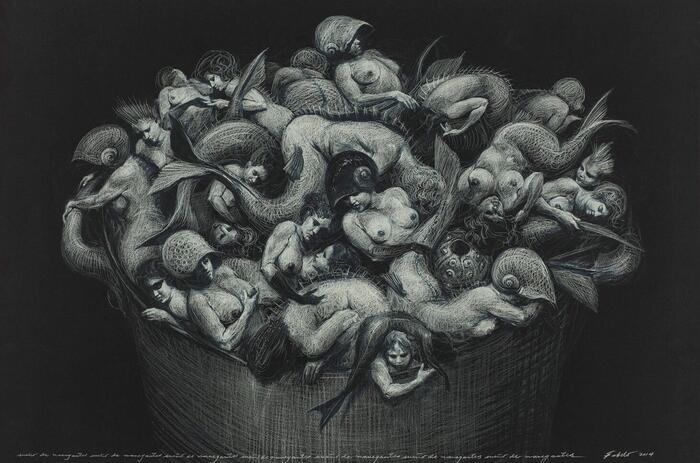
The DA2 hosts the last stage of the itinerancy of the Luciano Méndez Sánchez Contemporary Cuban Art Collection, a cycle of exhibitions that the collection started in 2019 in Spain in this institution and that reflects, through different curatorial lines, the realities and attitudes around contemporary art in Cuba.
THE LATEST TOUR AT DA2 OF THE LUCIANO MÉNDEZ SÁNCHEZ CONTEMPORARY CUBAN ART COLLECTION
The DA2 hosts the last stage of the itinerancy of the Luciano Méndez Sánchez Contemporary Cuban Art Collection, a cycle of exhibitions that the collection started in 2019 in Spain in this institution and that reflects, through different curatorial lines, the realities and attitudes around contemporary art in Cuba.
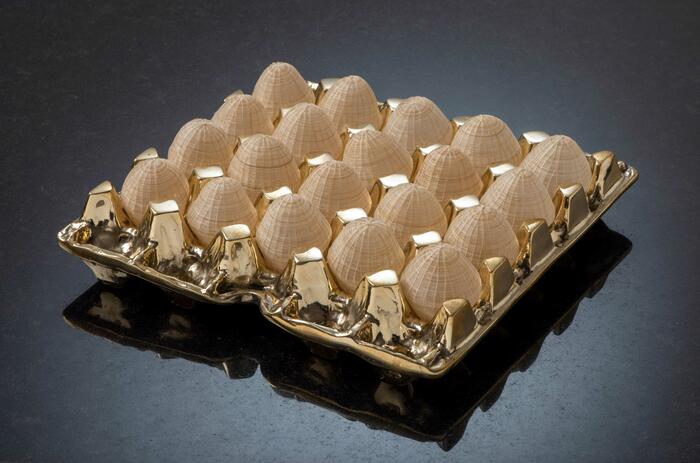
Rutas relacionales (Relational Routes) is the long-term collective with which the Lucía Mendoza gallery celebrates its tenth anniversary and with which it intends to raise awareness, through the work of about 40 artists, about several of the current thematic and philosophical axes, those that trace their need from the relationship of mankind with its environment. In these axes, we find lines of argument that deal with ecology, society and economies, passing through everything that composes them, such as political processes or the construction of identity.
"RELATIONAL ROUTES": THE LATIN AMERICAN COLLECTIVE EXHIBITION AT LUCÍA MENDOZA
Rutas relacionales (Relational Routes) is the long-term collective with which the Lucía Mendoza gallery celebrates its tenth anniversary and with which it intends to raise awareness, through the work of about 40 artists, about several of the current thematic and philosophical axes, those that trace their need from the relationship of mankind with its environment. In these axes, we find lines of argument that deal with ecology, society and economies, passing through everything that composes them, such as political processes or the construction of identity.
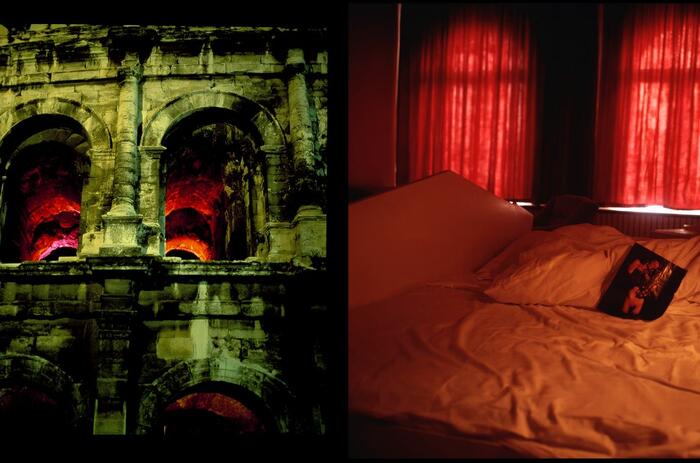
The Niemeyer Center, in the Asturian city of Aviles, hosts Tokyo Blues hacia Gritos Sordos (From Tokyo Blues to Deaf Cries), an exhibition by Brazilian photographer Miguel Rio Branco (Las Palmas de Gran Canaria, Spain, 1946) that traces a journey through his work of crossed images and pieces that were conceived from his personal experience on a trip to Japan, a country whose culture and names in cinema, art and architecture have always fascinated the artist.
RIO BRANCO'S JAPANESE FASCINATION IN AVILÉS
The Niemeyer Center, in the Asturian city of Aviles, hosts Tokyo Blues hacia Gritos Sordos (From Tokyo Blues to Deaf Cries), an exhibition by Brazilian photographer Miguel Rio Branco (Las Palmas de Gran Canaria, Spain, 1946) that traces a journey through his work of crossed images and pieces that were conceived from his personal experience on a trip to Japan, a country whose culture and names in cinema, art and architecture have always fascinated the artist.

Last Thursday, September 26, a ceremony was held at the French Embassy in Paraguay, where Ambassador Pierre-Christian Soccoja awarded art critic Adriana Almada and visual artist Félix Toranzos with the Order of Arts and Letters. Both were part of the third edition of Pinta Sud | ASU.
ADRIANA ALMADA AND FÉLIX TORANZOS: AWARDED BY THE GOVERNMENT OF FRANCE
Last Thursday, September 26, a ceremony was held at the French Embassy in Paraguay, where Ambassador Pierre-Christian Soccoja awarded art critic Adriana Almada and visual artist Félix Toranzos with the Order of Arts and Letters. Both were part of the third edition of Pinta Sud | ASU.
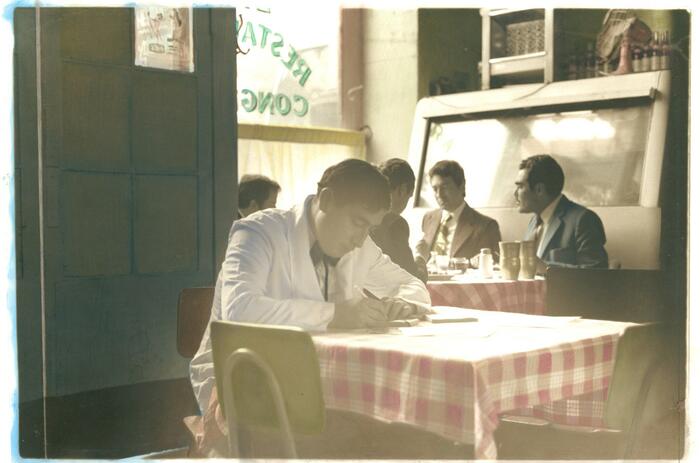
Larivière Foundation opens two exhibitions: Ideas Fijas (Fixed Ideas), by Cecilia Szalkowicz, curated by Mariano Mayer; and Carrusel de melancolías (Carousel of Melancholy), by renowned Chilean photographer Leonora Vicuña, curated by Alexis Fabry.
TWO EXHIBITIONS, TWO WOMEN PHOTOGRAPHERS AT THE LARIVÈRE FOUNDATION
Larivière Foundation opens two exhibitions: Ideas Fijas (Fixed Ideas), by Cecilia Szalkowicz, curated by Mariano Mayer; and Carrusel de melancolías (Carousel of Melancholy), by renowned Chilean photographer Leonora Vicuña, curated by Alexis Fabry.
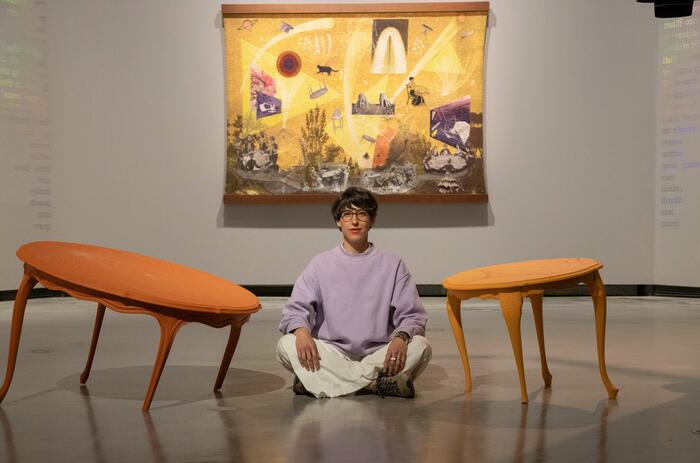
Mercedes Azpilicueta (La Plata, Argentina, 1981) lands with her dancing tables at the Centro de Creación Contemporánea de Andalucía (C3A) in an exhibition curated by Verónica Rossi and Jimena Blázquez. A visual and performance artist based in Amsterdam, her artistic practice proposes in her multi-layered works a meeting place between the past and the present through her protagonists and their expressions, some physical -but not corporeal-, such as voices; others, material, such as forms and texts; and others of a more intangible nature such as memory and remembrance.
MERCEDES AZPILICUETA AND HER “DANCING TABLES” IN C3A
Mercedes Azpilicueta (La Plata, Argentina, 1981) lands with her dancing tables at the Centro de Creación Contemporánea de Andalucía (C3A) in an exhibition curated by Verónica Rossi and Jimena Blázquez. A visual and performance artist based in Amsterdam, her artistic practice proposes in her multi-layered works a meeting place between the past and the present through her protagonists and their expressions, some physical -but not corporeal-, such as voices; others, material, such as forms and texts; and others of a more intangible nature such as memory and remembrance.
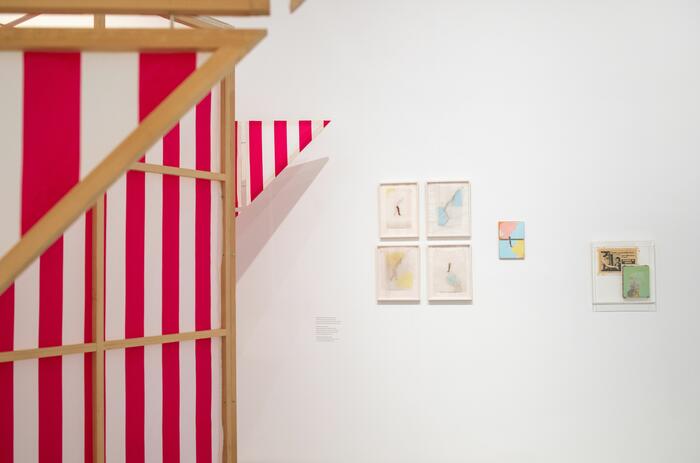
“I imagine the museum as an archipelago. It is not a continent, but an archipelago (...) The idea today is to put the world in contact with the world, to put some parts of the world in contact with other parts of the world... We must multiply the number of worlds inside museums”. Édouard Glissant (Sainte-Marie, Martinique, 1929-Paris, France, 2011) expressed his vision of museum functionality in this metaphorical way in his work Poetics of Relationship (1990).
CAN THE ARCHIPELAGO ENTER THE MUSEUM? IBEROAMERICA IN THE PROPOSAL OF THE HELGA DE ALVEAR MUSEUM
“I imagine the museum as an archipelago. It is not a continent, but an archipelago (...) The idea today is to put the world in contact with the world, to put some parts of the world in contact with other parts of the world... We must multiply the number of worlds inside museums”. Édouard Glissant (Sainte-Marie, Martinique, 1929-Paris, France, 2011) expressed his vision of museum functionality in this metaphorical way in his work Poetics of Relationship (1990).
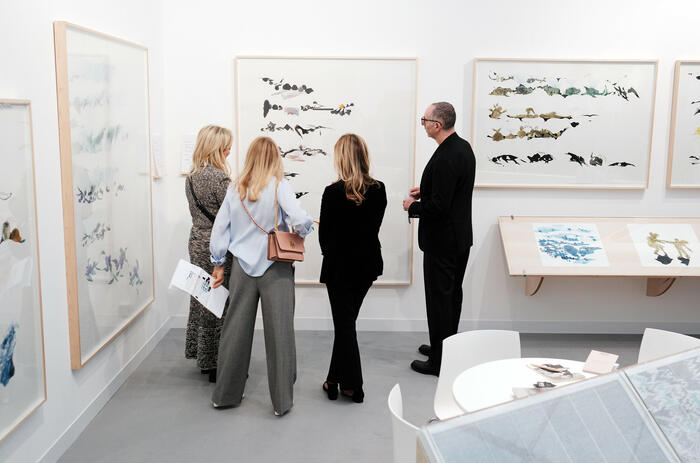
Mid-October marks a pivotal moment in the art world, as the spotlight shifts between London and Paris. First up is London, with Frieze opening on October 9th accompanied by a flurry of gallery openings and art events across the city. This season also sees important auctions, with leading houses hosting sales of Modern and Contemporary art.
A TALE OF TWO CITIES: LONDON VS. PARIS, THE ART WORLD’S ONGOING RIVALRY
Mid-October marks a pivotal moment in the art world, as the spotlight shifts between London and Paris. First up is London, with Frieze opening on October 9th accompanied by a flurry of gallery openings and art events across the city. This season also sees important auctions, with leading houses hosting sales of Modern and Contemporary art.
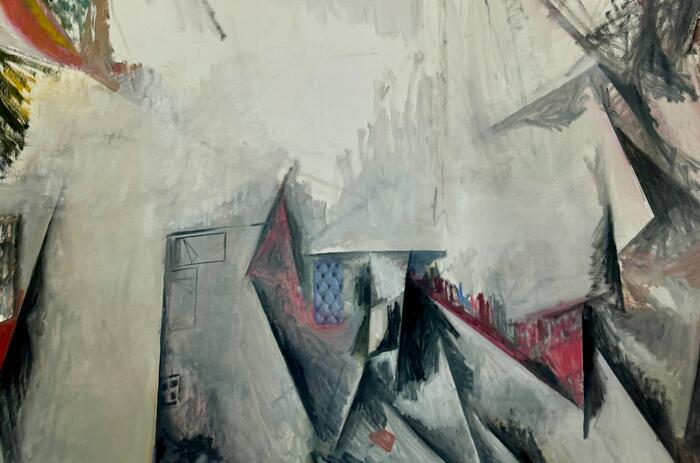
The Argentine artist Guillermo Kuitca was commissioned to create a site-specific work in the chapel of the Hôtel Salé, home of the Musée national Picasso-Paris. The final commission, whose canvas is the walls of the chapel, can now be visited.
GUILLERMO KUITCA: A CUBIST CHAPELL IN THE MUSÉE NATIONAL PICASSO-PARIS
The Argentine artist Guillermo Kuitca was commissioned to create a site-specific work in the chapel of the Hôtel Salé, home of the Musée national Picasso-Paris. The final commission, whose canvas is the walls of the chapel, can now be visited.
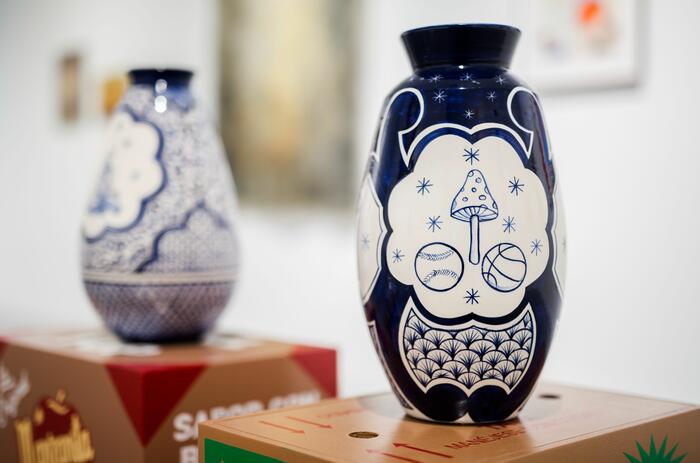
In an art industry that increasingly advocates following the lines established by cultural policies, it is always comforting to return to thesis themes, to environments that draw from social and historiographic sources, of course, but also from myths and a well-understood anthropology. You can go deeper in subtitles and lines or you can put together a skeleton, but the overview can also be a reward these days.
THE FIRE KEEPERS, A PERSPECTIVE ON THE MYTH OF FIRE FROM A MEXICAN CURATORIAL PERSPECTIVE
In an art industry that increasingly advocates following the lines established by cultural policies, it is always comforting to return to thesis themes, to environments that draw from social and historiographic sources, of course, but also from myths and a well-understood anthropology. You can go deeper in subtitles and lines or you can put together a skeleton, but the overview can also be a reward these days.
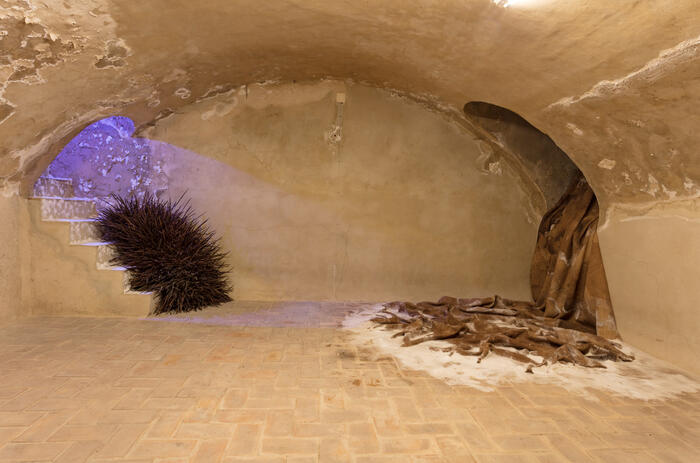
The Andalusian Center for Contemporary Art (CAAC) is showing Continuum or the appearance of the parts and the whole in its recovered space in the cellars of the institution's complex in Seville, an exhibition whose origin is to be sought in Profundis, the proposal that Colombian Delcy Morelos (Tierralta, Colombia, 1967) made for this same center this year and that served as a framework to sublimate, from the analysis, the dialogue beyond the material and the relationship she kept with her collaborators when it came to putting together her recent exhibition.
CONTINUUM: FROM THE DIALOGUE WITH DELCY MORELOS
The Andalusian Center for Contemporary Art (CAAC) is showing Continuum or the appearance of the parts and the whole in its recovered space in the cellars of the institution's complex in Seville, an exhibition whose origin is to be sought in Profundis, the proposal that Colombian Delcy Morelos (Tierralta, Colombia, 1967) made for this same center this year and that served as a framework to sublimate, from the analysis, the dialogue beyond the material and the relationship she kept with her collaborators when it came to putting together her recent exhibition.

Travesía Cuatro hosts at its Madrid headquarters Surf and Turf, the fifth exhibition that the gallery dedicates to Milena Múzquiz (Tijuana, Mexico, 1972), that gathers, with about thirty works, the continuity of the production that began after the aesthetic and technical change produced by the end of Los Súper Elegantes, a musical group that he shared with the Argentine Martiniano López Crozet, and which represented a platform that brought together his purest expression through voice and body, as well as with the aesthetic possibilities of costumes and image.
THE DAILY LIFE AND POPULAR EXPRESSION OF MILENA MÚZQUIZ IN TRAVESÍA CUATRO
Travesía Cuatro hosts at its Madrid headquarters Surf and Turf, the fifth exhibition that the gallery dedicates to Milena Múzquiz (Tijuana, Mexico, 1972), that gathers, with about thirty works, the continuity of the production that began after the aesthetic and technical change produced by the end of Los Súper Elegantes, a musical group that he shared with the Argentine Martiniano López Crozet, and which represented a platform that brought together his purest expression through voice and body, as well as with the aesthetic possibilities of costumes and image.

The DA2 hosts the last stage of the itinerancy of the Luciano Méndez Sánchez Contemporary Cuban Art Collection, a cycle of exhibitions that the collection started in 2019 in Spain in this institution and that reflects, through different curatorial lines, the realities and attitudes around contemporary art in Cuba.
THE LATEST TOUR AT DA2 OF THE LUCIANO MÉNDEZ SÁNCHEZ CONTEMPORARY CUBAN ART COLLECTION
The DA2 hosts the last stage of the itinerancy of the Luciano Méndez Sánchez Contemporary Cuban Art Collection, a cycle of exhibitions that the collection started in 2019 in Spain in this institution and that reflects, through different curatorial lines, the realities and attitudes around contemporary art in Cuba.

Rutas relacionales (Relational Routes) is the long-term collective with which the Lucía Mendoza gallery celebrates its tenth anniversary and with which it intends to raise awareness, through the work of about 40 artists, about several of the current thematic and philosophical axes, those that trace their need from the relationship of mankind with its environment. In these axes, we find lines of argument that deal with ecology, society and economies, passing through everything that composes them, such as political processes or the construction of identity.
"RELATIONAL ROUTES": THE LATIN AMERICAN COLLECTIVE EXHIBITION AT LUCÍA MENDOZA
Rutas relacionales (Relational Routes) is the long-term collective with which the Lucía Mendoza gallery celebrates its tenth anniversary and with which it intends to raise awareness, through the work of about 40 artists, about several of the current thematic and philosophical axes, those that trace their need from the relationship of mankind with its environment. In these axes, we find lines of argument that deal with ecology, society and economies, passing through everything that composes them, such as political processes or the construction of identity.

The Niemeyer Center, in the Asturian city of Aviles, hosts Tokyo Blues hacia Gritos Sordos (From Tokyo Blues to Deaf Cries), an exhibition by Brazilian photographer Miguel Rio Branco (Las Palmas de Gran Canaria, Spain, 1946) that traces a journey through his work of crossed images and pieces that were conceived from his personal experience on a trip to Japan, a country whose culture and names in cinema, art and architecture have always fascinated the artist.
RIO BRANCO'S JAPANESE FASCINATION IN AVILÉS
The Niemeyer Center, in the Asturian city of Aviles, hosts Tokyo Blues hacia Gritos Sordos (From Tokyo Blues to Deaf Cries), an exhibition by Brazilian photographer Miguel Rio Branco (Las Palmas de Gran Canaria, Spain, 1946) that traces a journey through his work of crossed images and pieces that were conceived from his personal experience on a trip to Japan, a country whose culture and names in cinema, art and architecture have always fascinated the artist.

Last Thursday, September 26, a ceremony was held at the French Embassy in Paraguay, where Ambassador Pierre-Christian Soccoja awarded art critic Adriana Almada and visual artist Félix Toranzos with the Order of Arts and Letters. Both were part of the third edition of Pinta Sud | ASU.
ADRIANA ALMADA AND FÉLIX TORANZOS: AWARDED BY THE GOVERNMENT OF FRANCE
Last Thursday, September 26, a ceremony was held at the French Embassy in Paraguay, where Ambassador Pierre-Christian Soccoja awarded art critic Adriana Almada and visual artist Félix Toranzos with the Order of Arts and Letters. Both were part of the third edition of Pinta Sud | ASU.

Larivière Foundation opens two exhibitions: Ideas Fijas (Fixed Ideas), by Cecilia Szalkowicz, curated by Mariano Mayer; and Carrusel de melancolías (Carousel of Melancholy), by renowned Chilean photographer Leonora Vicuña, curated by Alexis Fabry.
TWO EXHIBITIONS, TWO WOMEN PHOTOGRAPHERS AT THE LARIVÈRE FOUNDATION
Larivière Foundation opens two exhibitions: Ideas Fijas (Fixed Ideas), by Cecilia Szalkowicz, curated by Mariano Mayer; and Carrusel de melancolías (Carousel of Melancholy), by renowned Chilean photographer Leonora Vicuña, curated by Alexis Fabry.

Mercedes Azpilicueta (La Plata, Argentina, 1981) lands with her dancing tables at the Centro de Creación Contemporánea de Andalucía (C3A) in an exhibition curated by Verónica Rossi and Jimena Blázquez. A visual and performance artist based in Amsterdam, her artistic practice proposes in her multi-layered works a meeting place between the past and the present through her protagonists and their expressions, some physical -but not corporeal-, such as voices; others, material, such as forms and texts; and others of a more intangible nature such as memory and remembrance.
MERCEDES AZPILICUETA AND HER “DANCING TABLES” IN C3A
Mercedes Azpilicueta (La Plata, Argentina, 1981) lands with her dancing tables at the Centro de Creación Contemporánea de Andalucía (C3A) in an exhibition curated by Verónica Rossi and Jimena Blázquez. A visual and performance artist based in Amsterdam, her artistic practice proposes in her multi-layered works a meeting place between the past and the present through her protagonists and their expressions, some physical -but not corporeal-, such as voices; others, material, such as forms and texts; and others of a more intangible nature such as memory and remembrance.

“I imagine the museum as an archipelago. It is not a continent, but an archipelago (...) The idea today is to put the world in contact with the world, to put some parts of the world in contact with other parts of the world... We must multiply the number of worlds inside museums”. Édouard Glissant (Sainte-Marie, Martinique, 1929-Paris, France, 2011) expressed his vision of museum functionality in this metaphorical way in his work Poetics of Relationship (1990).
CAN THE ARCHIPELAGO ENTER THE MUSEUM? IBEROAMERICA IN THE PROPOSAL OF THE HELGA DE ALVEAR MUSEUM
“I imagine the museum as an archipelago. It is not a continent, but an archipelago (...) The idea today is to put the world in contact with the world, to put some parts of the world in contact with other parts of the world... We must multiply the number of worlds inside museums”. Édouard Glissant (Sainte-Marie, Martinique, 1929-Paris, France, 2011) expressed his vision of museum functionality in this metaphorical way in his work Poetics of Relationship (1990).

Mid-October marks a pivotal moment in the art world, as the spotlight shifts between London and Paris. First up is London, with Frieze opening on October 9th accompanied by a flurry of gallery openings and art events across the city. This season also sees important auctions, with leading houses hosting sales of Modern and Contemporary art.
A TALE OF TWO CITIES: LONDON VS. PARIS, THE ART WORLD’S ONGOING RIVALRY
Mid-October marks a pivotal moment in the art world, as the spotlight shifts between London and Paris. First up is London, with Frieze opening on October 9th accompanied by a flurry of gallery openings and art events across the city. This season also sees important auctions, with leading houses hosting sales of Modern and Contemporary art.

The Argentine artist Guillermo Kuitca was commissioned to create a site-specific work in the chapel of the Hôtel Salé, home of the Musée national Picasso-Paris. The final commission, whose canvas is the walls of the chapel, can now be visited.
GUILLERMO KUITCA: A CUBIST CHAPELL IN THE MUSÉE NATIONAL PICASSO-PARIS
The Argentine artist Guillermo Kuitca was commissioned to create a site-specific work in the chapel of the Hôtel Salé, home of the Musée national Picasso-Paris. The final commission, whose canvas is the walls of the chapel, can now be visited.

In an art industry that increasingly advocates following the lines established by cultural policies, it is always comforting to return to thesis themes, to environments that draw from social and historiographic sources, of course, but also from myths and a well-understood anthropology. You can go deeper in subtitles and lines or you can put together a skeleton, but the overview can also be a reward these days.
THE FIRE KEEPERS, A PERSPECTIVE ON THE MYTH OF FIRE FROM A MEXICAN CURATORIAL PERSPECTIVE
In an art industry that increasingly advocates following the lines established by cultural policies, it is always comforting to return to thesis themes, to environments that draw from social and historiographic sources, of course, but also from myths and a well-understood anthropology. You can go deeper in subtitles and lines or you can put together a skeleton, but the overview can also be a reward these days.

The Andalusian Center for Contemporary Art (CAAC) is showing Continuum or the appearance of the parts and the whole in its recovered space in the cellars of the institution's complex in Seville, an exhibition whose origin is to be sought in Profundis, the proposal that Colombian Delcy Morelos (Tierralta, Colombia, 1967) made for this same center this year and that served as a framework to sublimate, from the analysis, the dialogue beyond the material and the relationship she kept with her collaborators when it came to putting together her recent exhibition.
CONTINUUM: FROM THE DIALOGUE WITH DELCY MORELOS
The Andalusian Center for Contemporary Art (CAAC) is showing Continuum or the appearance of the parts and the whole in its recovered space in the cellars of the institution's complex in Seville, an exhibition whose origin is to be sought in Profundis, the proposal that Colombian Delcy Morelos (Tierralta, Colombia, 1967) made for this same center this year and that served as a framework to sublimate, from the analysis, the dialogue beyond the material and the relationship she kept with her collaborators when it came to putting together her recent exhibition.

Travesía Cuatro hosts at its Madrid headquarters Surf and Turf, the fifth exhibition that the gallery dedicates to Milena Múzquiz (Tijuana, Mexico, 1972), that gathers, with about thirty works, the continuity of the production that began after the aesthetic and technical change produced by the end of Los Súper Elegantes, a musical group that he shared with the Argentine Martiniano López Crozet, and which represented a platform that brought together his purest expression through voice and body, as well as with the aesthetic possibilities of costumes and image.
THE DAILY LIFE AND POPULAR EXPRESSION OF MILENA MÚZQUIZ IN TRAVESÍA CUATRO
Travesía Cuatro hosts at its Madrid headquarters Surf and Turf, the fifth exhibition that the gallery dedicates to Milena Múzquiz (Tijuana, Mexico, 1972), that gathers, with about thirty works, the continuity of the production that began after the aesthetic and technical change produced by the end of Los Súper Elegantes, a musical group that he shared with the Argentine Martiniano López Crozet, and which represented a platform that brought together his purest expression through voice and body, as well as with the aesthetic possibilities of costumes and image.

The DA2 hosts the last stage of the itinerancy of the Luciano Méndez Sánchez Contemporary Cuban Art Collection, a cycle of exhibitions that the collection started in 2019 in Spain in this institution and that reflects, through different curatorial lines, the realities and attitudes around contemporary art in Cuba.
THE LATEST TOUR AT DA2 OF THE LUCIANO MÉNDEZ SÁNCHEZ CONTEMPORARY CUBAN ART COLLECTION
The DA2 hosts the last stage of the itinerancy of the Luciano Méndez Sánchez Contemporary Cuban Art Collection, a cycle of exhibitions that the collection started in 2019 in Spain in this institution and that reflects, through different curatorial lines, the realities and attitudes around contemporary art in Cuba.

Rutas relacionales (Relational Routes) is the long-term collective with which the Lucía Mendoza gallery celebrates its tenth anniversary and with which it intends to raise awareness, through the work of about 40 artists, about several of the current thematic and philosophical axes, those that trace their need from the relationship of mankind with its environment. In these axes, we find lines of argument that deal with ecology, society and economies, passing through everything that composes them, such as political processes or the construction of identity.
"RELATIONAL ROUTES": THE LATIN AMERICAN COLLECTIVE EXHIBITION AT LUCÍA MENDOZA
Rutas relacionales (Relational Routes) is the long-term collective with which the Lucía Mendoza gallery celebrates its tenth anniversary and with which it intends to raise awareness, through the work of about 40 artists, about several of the current thematic and philosophical axes, those that trace their need from the relationship of mankind with its environment. In these axes, we find lines of argument that deal with ecology, society and economies, passing through everything that composes them, such as political processes or the construction of identity.

The Niemeyer Center, in the Asturian city of Aviles, hosts Tokyo Blues hacia Gritos Sordos (From Tokyo Blues to Deaf Cries), an exhibition by Brazilian photographer Miguel Rio Branco (Las Palmas de Gran Canaria, Spain, 1946) that traces a journey through his work of crossed images and pieces that were conceived from his personal experience on a trip to Japan, a country whose culture and names in cinema, art and architecture have always fascinated the artist.
RIO BRANCO'S JAPANESE FASCINATION IN AVILÉS
The Niemeyer Center, in the Asturian city of Aviles, hosts Tokyo Blues hacia Gritos Sordos (From Tokyo Blues to Deaf Cries), an exhibition by Brazilian photographer Miguel Rio Branco (Las Palmas de Gran Canaria, Spain, 1946) that traces a journey through his work of crossed images and pieces that were conceived from his personal experience on a trip to Japan, a country whose culture and names in cinema, art and architecture have always fascinated the artist.

Last Thursday, September 26, a ceremony was held at the French Embassy in Paraguay, where Ambassador Pierre-Christian Soccoja awarded art critic Adriana Almada and visual artist Félix Toranzos with the Order of Arts and Letters. Both were part of the third edition of Pinta Sud | ASU.
ADRIANA ALMADA AND FÉLIX TORANZOS: AWARDED BY THE GOVERNMENT OF FRANCE
Last Thursday, September 26, a ceremony was held at the French Embassy in Paraguay, where Ambassador Pierre-Christian Soccoja awarded art critic Adriana Almada and visual artist Félix Toranzos with the Order of Arts and Letters. Both were part of the third edition of Pinta Sud | ASU.

Larivière Foundation opens two exhibitions: Ideas Fijas (Fixed Ideas), by Cecilia Szalkowicz, curated by Mariano Mayer; and Carrusel de melancolías (Carousel of Melancholy), by renowned Chilean photographer Leonora Vicuña, curated by Alexis Fabry.
TWO EXHIBITIONS, TWO WOMEN PHOTOGRAPHERS AT THE LARIVÈRE FOUNDATION
Larivière Foundation opens two exhibitions: Ideas Fijas (Fixed Ideas), by Cecilia Szalkowicz, curated by Mariano Mayer; and Carrusel de melancolías (Carousel of Melancholy), by renowned Chilean photographer Leonora Vicuña, curated by Alexis Fabry.

Mercedes Azpilicueta (La Plata, Argentina, 1981) lands with her dancing tables at the Centro de Creación Contemporánea de Andalucía (C3A) in an exhibition curated by Verónica Rossi and Jimena Blázquez. A visual and performance artist based in Amsterdam, her artistic practice proposes in her multi-layered works a meeting place between the past and the present through her protagonists and their expressions, some physical -but not corporeal-, such as voices; others, material, such as forms and texts; and others of a more intangible nature such as memory and remembrance.
MERCEDES AZPILICUETA AND HER “DANCING TABLES” IN C3A
Mercedes Azpilicueta (La Plata, Argentina, 1981) lands with her dancing tables at the Centro de Creación Contemporánea de Andalucía (C3A) in an exhibition curated by Verónica Rossi and Jimena Blázquez. A visual and performance artist based in Amsterdam, her artistic practice proposes in her multi-layered works a meeting place between the past and the present through her protagonists and their expressions, some physical -but not corporeal-, such as voices; others, material, such as forms and texts; and others of a more intangible nature such as memory and remembrance.

“I imagine the museum as an archipelago. It is not a continent, but an archipelago (...) The idea today is to put the world in contact with the world, to put some parts of the world in contact with other parts of the world... We must multiply the number of worlds inside museums”. Édouard Glissant (Sainte-Marie, Martinique, 1929-Paris, France, 2011) expressed his vision of museum functionality in this metaphorical way in his work Poetics of Relationship (1990).
CAN THE ARCHIPELAGO ENTER THE MUSEUM? IBEROAMERICA IN THE PROPOSAL OF THE HELGA DE ALVEAR MUSEUM
“I imagine the museum as an archipelago. It is not a continent, but an archipelago (...) The idea today is to put the world in contact with the world, to put some parts of the world in contact with other parts of the world... We must multiply the number of worlds inside museums”. Édouard Glissant (Sainte-Marie, Martinique, 1929-Paris, France, 2011) expressed his vision of museum functionality in this metaphorical way in his work Poetics of Relationship (1990).

Mid-October marks a pivotal moment in the art world, as the spotlight shifts between London and Paris. First up is London, with Frieze opening on October 9th accompanied by a flurry of gallery openings and art events across the city. This season also sees important auctions, with leading houses hosting sales of Modern and Contemporary art.
A TALE OF TWO CITIES: LONDON VS. PARIS, THE ART WORLD’S ONGOING RIVALRY
Mid-October marks a pivotal moment in the art world, as the spotlight shifts between London and Paris. First up is London, with Frieze opening on October 9th accompanied by a flurry of gallery openings and art events across the city. This season also sees important auctions, with leading houses hosting sales of Modern and Contemporary art.

The Argentine artist Guillermo Kuitca was commissioned to create a site-specific work in the chapel of the Hôtel Salé, home of the Musée national Picasso-Paris. The final commission, whose canvas is the walls of the chapel, can now be visited.
GUILLERMO KUITCA: A CUBIST CHAPELL IN THE MUSÉE NATIONAL PICASSO-PARIS
The Argentine artist Guillermo Kuitca was commissioned to create a site-specific work in the chapel of the Hôtel Salé, home of the Musée national Picasso-Paris. The final commission, whose canvas is the walls of the chapel, can now be visited.

In an art industry that increasingly advocates following the lines established by cultural policies, it is always comforting to return to thesis themes, to environments that draw from social and historiographic sources, of course, but also from myths and a well-understood anthropology. You can go deeper in subtitles and lines or you can put together a skeleton, but the overview can also be a reward these days.
THE FIRE KEEPERS, A PERSPECTIVE ON THE MYTH OF FIRE FROM A MEXICAN CURATORIAL PERSPECTIVE
In an art industry that increasingly advocates following the lines established by cultural policies, it is always comforting to return to thesis themes, to environments that draw from social and historiographic sources, of course, but also from myths and a well-understood anthropology. You can go deeper in subtitles and lines or you can put together a skeleton, but the overview can also be a reward these days.

The Andalusian Center for Contemporary Art (CAAC) is showing Continuum or the appearance of the parts and the whole in its recovered space in the cellars of the institution's complex in Seville, an exhibition whose origin is to be sought in Profundis, the proposal that Colombian Delcy Morelos (Tierralta, Colombia, 1967) made for this same center this year and that served as a framework to sublimate, from the analysis, the dialogue beyond the material and the relationship she kept with her collaborators when it came to putting together her recent exhibition.
CONTINUUM: FROM THE DIALOGUE WITH DELCY MORELOS
The Andalusian Center for Contemporary Art (CAAC) is showing Continuum or the appearance of the parts and the whole in its recovered space in the cellars of the institution's complex in Seville, an exhibition whose origin is to be sought in Profundis, the proposal that Colombian Delcy Morelos (Tierralta, Colombia, 1967) made for this same center this year and that served as a framework to sublimate, from the analysis, the dialogue beyond the material and the relationship she kept with her collaborators when it came to putting together her recent exhibition.

Travesía Cuatro hosts at its Madrid headquarters Surf and Turf, the fifth exhibition that the gallery dedicates to Milena Múzquiz (Tijuana, Mexico, 1972), that gathers, with about thirty works, the continuity of the production that began after the aesthetic and technical change produced by the end of Los Súper Elegantes, a musical group that he shared with the Argentine Martiniano López Crozet, and which represented a platform that brought together his purest expression through voice and body, as well as with the aesthetic possibilities of costumes and image.
THE DAILY LIFE AND POPULAR EXPRESSION OF MILENA MÚZQUIZ IN TRAVESÍA CUATRO
Travesía Cuatro hosts at its Madrid headquarters Surf and Turf, the fifth exhibition that the gallery dedicates to Milena Múzquiz (Tijuana, Mexico, 1972), that gathers, with about thirty works, the continuity of the production that began after the aesthetic and technical change produced by the end of Los Súper Elegantes, a musical group that he shared with the Argentine Martiniano López Crozet, and which represented a platform that brought together his purest expression through voice and body, as well as with the aesthetic possibilities of costumes and image.

The DA2 hosts the last stage of the itinerancy of the Luciano Méndez Sánchez Contemporary Cuban Art Collection, a cycle of exhibitions that the collection started in 2019 in Spain in this institution and that reflects, through different curatorial lines, the realities and attitudes around contemporary art in Cuba.
THE LATEST TOUR AT DA2 OF THE LUCIANO MÉNDEZ SÁNCHEZ CONTEMPORARY CUBAN ART COLLECTION
The DA2 hosts the last stage of the itinerancy of the Luciano Méndez Sánchez Contemporary Cuban Art Collection, a cycle of exhibitions that the collection started in 2019 in Spain in this institution and that reflects, through different curatorial lines, the realities and attitudes around contemporary art in Cuba.

Rutas relacionales (Relational Routes) is the long-term collective with which the Lucía Mendoza gallery celebrates its tenth anniversary and with which it intends to raise awareness, through the work of about 40 artists, about several of the current thematic and philosophical axes, those that trace their need from the relationship of mankind with its environment. In these axes, we find lines of argument that deal with ecology, society and economies, passing through everything that composes them, such as political processes or the construction of identity.
"RELATIONAL ROUTES": THE LATIN AMERICAN COLLECTIVE EXHIBITION AT LUCÍA MENDOZA
Rutas relacionales (Relational Routes) is the long-term collective with which the Lucía Mendoza gallery celebrates its tenth anniversary and with which it intends to raise awareness, through the work of about 40 artists, about several of the current thematic and philosophical axes, those that trace their need from the relationship of mankind with its environment. In these axes, we find lines of argument that deal with ecology, society and economies, passing through everything that composes them, such as political processes or the construction of identity.

The Niemeyer Center, in the Asturian city of Aviles, hosts Tokyo Blues hacia Gritos Sordos (From Tokyo Blues to Deaf Cries), an exhibition by Brazilian photographer Miguel Rio Branco (Las Palmas de Gran Canaria, Spain, 1946) that traces a journey through his work of crossed images and pieces that were conceived from his personal experience on a trip to Japan, a country whose culture and names in cinema, art and architecture have always fascinated the artist.
RIO BRANCO'S JAPANESE FASCINATION IN AVILÉS
The Niemeyer Center, in the Asturian city of Aviles, hosts Tokyo Blues hacia Gritos Sordos (From Tokyo Blues to Deaf Cries), an exhibition by Brazilian photographer Miguel Rio Branco (Las Palmas de Gran Canaria, Spain, 1946) that traces a journey through his work of crossed images and pieces that were conceived from his personal experience on a trip to Japan, a country whose culture and names in cinema, art and architecture have always fascinated the artist.

Last Thursday, September 26, a ceremony was held at the French Embassy in Paraguay, where Ambassador Pierre-Christian Soccoja awarded art critic Adriana Almada and visual artist Félix Toranzos with the Order of Arts and Letters. Both were part of the third edition of Pinta Sud | ASU.
ADRIANA ALMADA AND FÉLIX TORANZOS: AWARDED BY THE GOVERNMENT OF FRANCE
Last Thursday, September 26, a ceremony was held at the French Embassy in Paraguay, where Ambassador Pierre-Christian Soccoja awarded art critic Adriana Almada and visual artist Félix Toranzos with the Order of Arts and Letters. Both were part of the third edition of Pinta Sud | ASU.

Larivière Foundation opens two exhibitions: Ideas Fijas (Fixed Ideas), by Cecilia Szalkowicz, curated by Mariano Mayer; and Carrusel de melancolías (Carousel of Melancholy), by renowned Chilean photographer Leonora Vicuña, curated by Alexis Fabry.
TWO EXHIBITIONS, TWO WOMEN PHOTOGRAPHERS AT THE LARIVÈRE FOUNDATION
Larivière Foundation opens two exhibitions: Ideas Fijas (Fixed Ideas), by Cecilia Szalkowicz, curated by Mariano Mayer; and Carrusel de melancolías (Carousel of Melancholy), by renowned Chilean photographer Leonora Vicuña, curated by Alexis Fabry.

Mercedes Azpilicueta (La Plata, Argentina, 1981) lands with her dancing tables at the Centro de Creación Contemporánea de Andalucía (C3A) in an exhibition curated by Verónica Rossi and Jimena Blázquez. A visual and performance artist based in Amsterdam, her artistic practice proposes in her multi-layered works a meeting place between the past and the present through her protagonists and their expressions, some physical -but not corporeal-, such as voices; others, material, such as forms and texts; and others of a more intangible nature such as memory and remembrance.
MERCEDES AZPILICUETA AND HER “DANCING TABLES” IN C3A
Mercedes Azpilicueta (La Plata, Argentina, 1981) lands with her dancing tables at the Centro de Creación Contemporánea de Andalucía (C3A) in an exhibition curated by Verónica Rossi and Jimena Blázquez. A visual and performance artist based in Amsterdam, her artistic practice proposes in her multi-layered works a meeting place between the past and the present through her protagonists and their expressions, some physical -but not corporeal-, such as voices; others, material, such as forms and texts; and others of a more intangible nature such as memory and remembrance.

“I imagine the museum as an archipelago. It is not a continent, but an archipelago (...) The idea today is to put the world in contact with the world, to put some parts of the world in contact with other parts of the world... We must multiply the number of worlds inside museums”. Édouard Glissant (Sainte-Marie, Martinique, 1929-Paris, France, 2011) expressed his vision of museum functionality in this metaphorical way in his work Poetics of Relationship (1990).
CAN THE ARCHIPELAGO ENTER THE MUSEUM? IBEROAMERICA IN THE PROPOSAL OF THE HELGA DE ALVEAR MUSEUM
“I imagine the museum as an archipelago. It is not a continent, but an archipelago (...) The idea today is to put the world in contact with the world, to put some parts of the world in contact with other parts of the world... We must multiply the number of worlds inside museums”. Édouard Glissant (Sainte-Marie, Martinique, 1929-Paris, France, 2011) expressed his vision of museum functionality in this metaphorical way in his work Poetics of Relationship (1990).

Mid-October marks a pivotal moment in the art world, as the spotlight shifts between London and Paris. First up is London, with Frieze opening on October 9th accompanied by a flurry of gallery openings and art events across the city. This season also sees important auctions, with leading houses hosting sales of Modern and Contemporary art.
A TALE OF TWO CITIES: LONDON VS. PARIS, THE ART WORLD’S ONGOING RIVALRY
Mid-October marks a pivotal moment in the art world, as the spotlight shifts between London and Paris. First up is London, with Frieze opening on October 9th accompanied by a flurry of gallery openings and art events across the city. This season also sees important auctions, with leading houses hosting sales of Modern and Contemporary art.

The Argentine artist Guillermo Kuitca was commissioned to create a site-specific work in the chapel of the Hôtel Salé, home of the Musée national Picasso-Paris. The final commission, whose canvas is the walls of the chapel, can now be visited.
GUILLERMO KUITCA: A CUBIST CHAPELL IN THE MUSÉE NATIONAL PICASSO-PARIS
The Argentine artist Guillermo Kuitca was commissioned to create a site-specific work in the chapel of the Hôtel Salé, home of the Musée national Picasso-Paris. The final commission, whose canvas is the walls of the chapel, can now be visited.

In an art industry that increasingly advocates following the lines established by cultural policies, it is always comforting to return to thesis themes, to environments that draw from social and historiographic sources, of course, but also from myths and a well-understood anthropology. You can go deeper in subtitles and lines or you can put together a skeleton, but the overview can also be a reward these days.
THE FIRE KEEPERS, A PERSPECTIVE ON THE MYTH OF FIRE FROM A MEXICAN CURATORIAL PERSPECTIVE
In an art industry that increasingly advocates following the lines established by cultural policies, it is always comforting to return to thesis themes, to environments that draw from social and historiographic sources, of course, but also from myths and a well-understood anthropology. You can go deeper in subtitles and lines or you can put together a skeleton, but the overview can also be a reward these days.

The Andalusian Center for Contemporary Art (CAAC) is showing Continuum or the appearance of the parts and the whole in its recovered space in the cellars of the institution's complex in Seville, an exhibition whose origin is to be sought in Profundis, the proposal that Colombian Delcy Morelos (Tierralta, Colombia, 1967) made for this same center this year and that served as a framework to sublimate, from the analysis, the dialogue beyond the material and the relationship she kept with her collaborators when it came to putting together her recent exhibition.
CONTINUUM: FROM THE DIALOGUE WITH DELCY MORELOS
The Andalusian Center for Contemporary Art (CAAC) is showing Continuum or the appearance of the parts and the whole in its recovered space in the cellars of the institution's complex in Seville, an exhibition whose origin is to be sought in Profundis, the proposal that Colombian Delcy Morelos (Tierralta, Colombia, 1967) made for this same center this year and that served as a framework to sublimate, from the analysis, the dialogue beyond the material and the relationship she kept with her collaborators when it came to putting together her recent exhibition.

Travesía Cuatro hosts at its Madrid headquarters Surf and Turf, the fifth exhibition that the gallery dedicates to Milena Múzquiz (Tijuana, Mexico, 1972), that gathers, with about thirty works, the continuity of the production that began after the aesthetic and technical change produced by the end of Los Súper Elegantes, a musical group that he shared with the Argentine Martiniano López Crozet, and which represented a platform that brought together his purest expression through voice and body, as well as with the aesthetic possibilities of costumes and image.
THE DAILY LIFE AND POPULAR EXPRESSION OF MILENA MÚZQUIZ IN TRAVESÍA CUATRO
Travesía Cuatro hosts at its Madrid headquarters Surf and Turf, the fifth exhibition that the gallery dedicates to Milena Múzquiz (Tijuana, Mexico, 1972), that gathers, with about thirty works, the continuity of the production that began after the aesthetic and technical change produced by the end of Los Súper Elegantes, a musical group that he shared with the Argentine Martiniano López Crozet, and which represented a platform that brought together his purest expression through voice and body, as well as with the aesthetic possibilities of costumes and image.

The DA2 hosts the last stage of the itinerancy of the Luciano Méndez Sánchez Contemporary Cuban Art Collection, a cycle of exhibitions that the collection started in 2019 in Spain in this institution and that reflects, through different curatorial lines, the realities and attitudes around contemporary art in Cuba.
THE LATEST TOUR AT DA2 OF THE LUCIANO MÉNDEZ SÁNCHEZ CONTEMPORARY CUBAN ART COLLECTION
The DA2 hosts the last stage of the itinerancy of the Luciano Méndez Sánchez Contemporary Cuban Art Collection, a cycle of exhibitions that the collection started in 2019 in Spain in this institution and that reflects, through different curatorial lines, the realities and attitudes around contemporary art in Cuba.

Rutas relacionales (Relational Routes) is the long-term collective with which the Lucía Mendoza gallery celebrates its tenth anniversary and with which it intends to raise awareness, through the work of about 40 artists, about several of the current thematic and philosophical axes, those that trace their need from the relationship of mankind with its environment. In these axes, we find lines of argument that deal with ecology, society and economies, passing through everything that composes them, such as political processes or the construction of identity.
"RELATIONAL ROUTES": THE LATIN AMERICAN COLLECTIVE EXHIBITION AT LUCÍA MENDOZA
Rutas relacionales (Relational Routes) is the long-term collective with which the Lucía Mendoza gallery celebrates its tenth anniversary and with which it intends to raise awareness, through the work of about 40 artists, about several of the current thematic and philosophical axes, those that trace their need from the relationship of mankind with its environment. In these axes, we find lines of argument that deal with ecology, society and economies, passing through everything that composes them, such as political processes or the construction of identity.

The Niemeyer Center, in the Asturian city of Aviles, hosts Tokyo Blues hacia Gritos Sordos (From Tokyo Blues to Deaf Cries), an exhibition by Brazilian photographer Miguel Rio Branco (Las Palmas de Gran Canaria, Spain, 1946) that traces a journey through his work of crossed images and pieces that were conceived from his personal experience on a trip to Japan, a country whose culture and names in cinema, art and architecture have always fascinated the artist.
RIO BRANCO'S JAPANESE FASCINATION IN AVILÉS
The Niemeyer Center, in the Asturian city of Aviles, hosts Tokyo Blues hacia Gritos Sordos (From Tokyo Blues to Deaf Cries), an exhibition by Brazilian photographer Miguel Rio Branco (Las Palmas de Gran Canaria, Spain, 1946) that traces a journey through his work of crossed images and pieces that were conceived from his personal experience on a trip to Japan, a country whose culture and names in cinema, art and architecture have always fascinated the artist.

Last Thursday, September 26, a ceremony was held at the French Embassy in Paraguay, where Ambassador Pierre-Christian Soccoja awarded art critic Adriana Almada and visual artist Félix Toranzos with the Order of Arts and Letters. Both were part of the third edition of Pinta Sud | ASU.
ADRIANA ALMADA AND FÉLIX TORANZOS: AWARDED BY THE GOVERNMENT OF FRANCE
Last Thursday, September 26, a ceremony was held at the French Embassy in Paraguay, where Ambassador Pierre-Christian Soccoja awarded art critic Adriana Almada and visual artist Félix Toranzos with the Order of Arts and Letters. Both were part of the third edition of Pinta Sud | ASU.

Larivière Foundation opens two exhibitions: Ideas Fijas (Fixed Ideas), by Cecilia Szalkowicz, curated by Mariano Mayer; and Carrusel de melancolías (Carousel of Melancholy), by renowned Chilean photographer Leonora Vicuña, curated by Alexis Fabry.
TWO EXHIBITIONS, TWO WOMEN PHOTOGRAPHERS AT THE LARIVÈRE FOUNDATION
Larivière Foundation opens two exhibitions: Ideas Fijas (Fixed Ideas), by Cecilia Szalkowicz, curated by Mariano Mayer; and Carrusel de melancolías (Carousel of Melancholy), by renowned Chilean photographer Leonora Vicuña, curated by Alexis Fabry.

Mercedes Azpilicueta (La Plata, Argentina, 1981) lands with her dancing tables at the Centro de Creación Contemporánea de Andalucía (C3A) in an exhibition curated by Verónica Rossi and Jimena Blázquez. A visual and performance artist based in Amsterdam, her artistic practice proposes in her multi-layered works a meeting place between the past and the present through her protagonists and their expressions, some physical -but not corporeal-, such as voices; others, material, such as forms and texts; and others of a more intangible nature such as memory and remembrance.
MERCEDES AZPILICUETA AND HER “DANCING TABLES” IN C3A
Mercedes Azpilicueta (La Plata, Argentina, 1981) lands with her dancing tables at the Centro de Creación Contemporánea de Andalucía (C3A) in an exhibition curated by Verónica Rossi and Jimena Blázquez. A visual and performance artist based in Amsterdam, her artistic practice proposes in her multi-layered works a meeting place between the past and the present through her protagonists and their expressions, some physical -but not corporeal-, such as voices; others, material, such as forms and texts; and others of a more intangible nature such as memory and remembrance.

“I imagine the museum as an archipelago. It is not a continent, but an archipelago (...) The idea today is to put the world in contact with the world, to put some parts of the world in contact with other parts of the world... We must multiply the number of worlds inside museums”. Édouard Glissant (Sainte-Marie, Martinique, 1929-Paris, France, 2011) expressed his vision of museum functionality in this metaphorical way in his work Poetics of Relationship (1990).
CAN THE ARCHIPELAGO ENTER THE MUSEUM? IBEROAMERICA IN THE PROPOSAL OF THE HELGA DE ALVEAR MUSEUM
“I imagine the museum as an archipelago. It is not a continent, but an archipelago (...) The idea today is to put the world in contact with the world, to put some parts of the world in contact with other parts of the world... We must multiply the number of worlds inside museums”. Édouard Glissant (Sainte-Marie, Martinique, 1929-Paris, France, 2011) expressed his vision of museum functionality in this metaphorical way in his work Poetics of Relationship (1990).

Mid-October marks a pivotal moment in the art world, as the spotlight shifts between London and Paris. First up is London, with Frieze opening on October 9th accompanied by a flurry of gallery openings and art events across the city. This season also sees important auctions, with leading houses hosting sales of Modern and Contemporary art.
A TALE OF TWO CITIES: LONDON VS. PARIS, THE ART WORLD’S ONGOING RIVALRY
Mid-October marks a pivotal moment in the art world, as the spotlight shifts between London and Paris. First up is London, with Frieze opening on October 9th accompanied by a flurry of gallery openings and art events across the city. This season also sees important auctions, with leading houses hosting sales of Modern and Contemporary art.

The Argentine artist Guillermo Kuitca was commissioned to create a site-specific work in the chapel of the Hôtel Salé, home of the Musée national Picasso-Paris. The final commission, whose canvas is the walls of the chapel, can now be visited.
GUILLERMO KUITCA: A CUBIST CHAPELL IN THE MUSÉE NATIONAL PICASSO-PARIS
The Argentine artist Guillermo Kuitca was commissioned to create a site-specific work in the chapel of the Hôtel Salé, home of the Musée national Picasso-Paris. The final commission, whose canvas is the walls of the chapel, can now be visited.

In an art industry that increasingly advocates following the lines established by cultural policies, it is always comforting to return to thesis themes, to environments that draw from social and historiographic sources, of course, but also from myths and a well-understood anthropology. You can go deeper in subtitles and lines or you can put together a skeleton, but the overview can also be a reward these days.
THE FIRE KEEPERS, A PERSPECTIVE ON THE MYTH OF FIRE FROM A MEXICAN CURATORIAL PERSPECTIVE
In an art industry that increasingly advocates following the lines established by cultural policies, it is always comforting to return to thesis themes, to environments that draw from social and historiographic sources, of course, but also from myths and a well-understood anthropology. You can go deeper in subtitles and lines or you can put together a skeleton, but the overview can also be a reward these days.

The Andalusian Center for Contemporary Art (CAAC) is showing Continuum or the appearance of the parts and the whole in its recovered space in the cellars of the institution's complex in Seville, an exhibition whose origin is to be sought in Profundis, the proposal that Colombian Delcy Morelos (Tierralta, Colombia, 1967) made for this same center this year and that served as a framework to sublimate, from the analysis, the dialogue beyond the material and the relationship she kept with her collaborators when it came to putting together her recent exhibition.
CONTINUUM: FROM THE DIALOGUE WITH DELCY MORELOS
The Andalusian Center for Contemporary Art (CAAC) is showing Continuum or the appearance of the parts and the whole in its recovered space in the cellars of the institution's complex in Seville, an exhibition whose origin is to be sought in Profundis, the proposal that Colombian Delcy Morelos (Tierralta, Colombia, 1967) made for this same center this year and that served as a framework to sublimate, from the analysis, the dialogue beyond the material and the relationship she kept with her collaborators when it came to putting together her recent exhibition.




